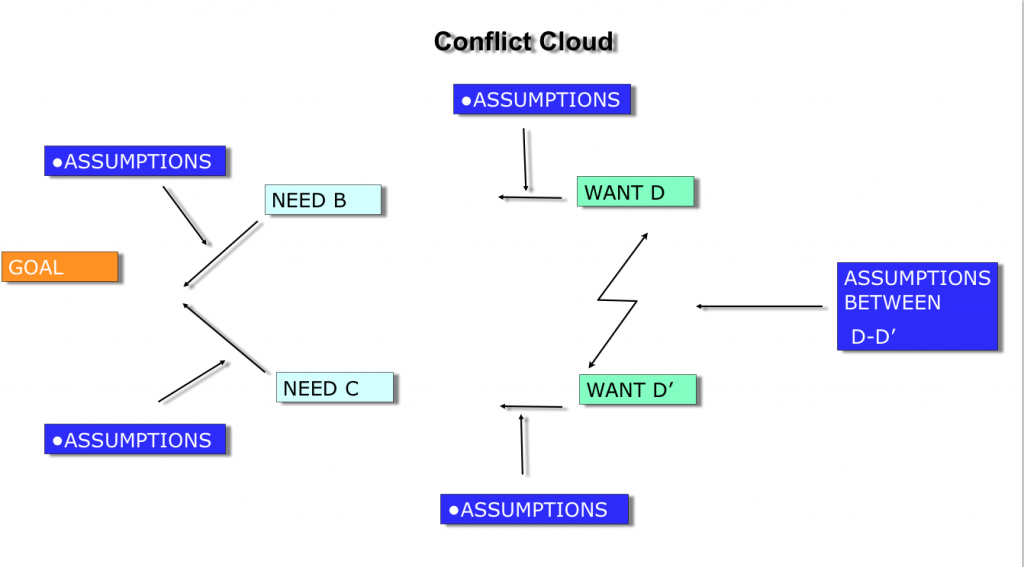Managing Non-Physical ConstraintsThe Thinking Processes (TP) were designed by Dr. Goldratt to help people to think better, faster and develop seemingly “impossible” solutions to their problems in a repeatable and reliable manner. They do so by enabling the correct verbalization, in a precisely defined linguistic context, of the “assumptions” we make about the situation we are analyzing. These assumptions, generally speaking, reflect mental models and limiting beliefs that “constrain” our mind in the search for a solution. The exercise that the Thinking Processes help us carry out is to logically challenge and invalidate these limiting beliefs. We perform this complex cognitive task in steps:
Managing non-physical constraints means, in essence, coming to term with our limiting beliefs and finding a way to overcome them. In fact, unlike physical constraints (the ones defined by the lack of some sort of physical quantity – i.e. the ones we encounter in managing a production flow) to which we apply the steps of focusing (identify, exploit, subordinate), when we deal with non-physical limitations we should right away find a way to eliminate them. As Dr. Goldratt has pointed out repeatedly: “we subordinate to physical constraints but we elevate (eliminate) non-physical ones”. There are several proven solutions for the management of physical constraints; DBR and Buffer Management for production; Critical Chain for new product development and Project Management; Replenishment for distribution; these are the most well known. They are based on very solid algorithms and the TP facilitate the understanding of their logic. Even for Marketing and Sales a very powerfully engineered solution exists and it is called “External Constraint”. How about everything else? How about the never-ending list of strategic issues that make or break a company? This is precisely the strength and the relevance of the Thinking Processes. Any issue, from M&A to maintenance, from IT investments to new ventures, from training design to infrastructure upgrade, can be framed with the use of the TP and tackled in a way that often leads to a breakthrough and always to a win-win solution. The real conceptual hurdle is to believe that an innovative solution can be systematically developed and implemented. This is precisely the challenge in front of those who choose to adopt the TP as a method for managing the organization. Maybe, the issue at stake here can be summarized with a precise conflict: Adopt the Thinking Processes of TOC vs. Do not adopt the Thinking Process Tools of TOC. Interesting, eh? Going forward, this website will strive to provide examples of using the Thinking Processes and the Decalogue to address non-physical constraints. A small example can be found in the companion book to this website. |





